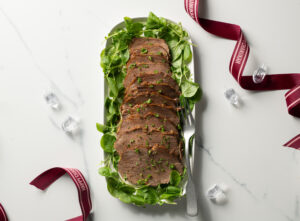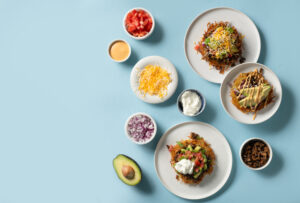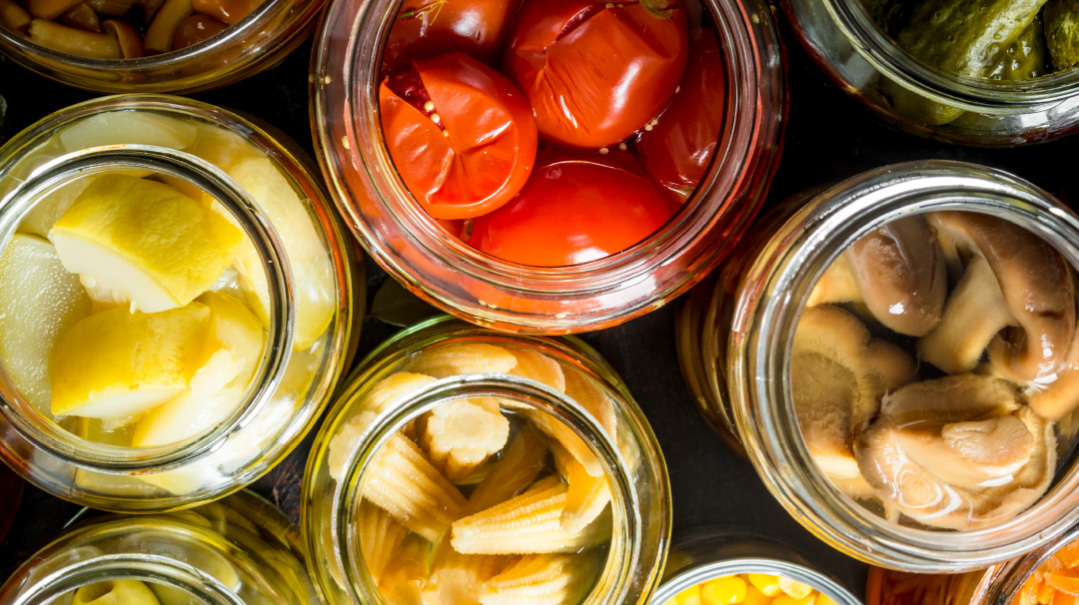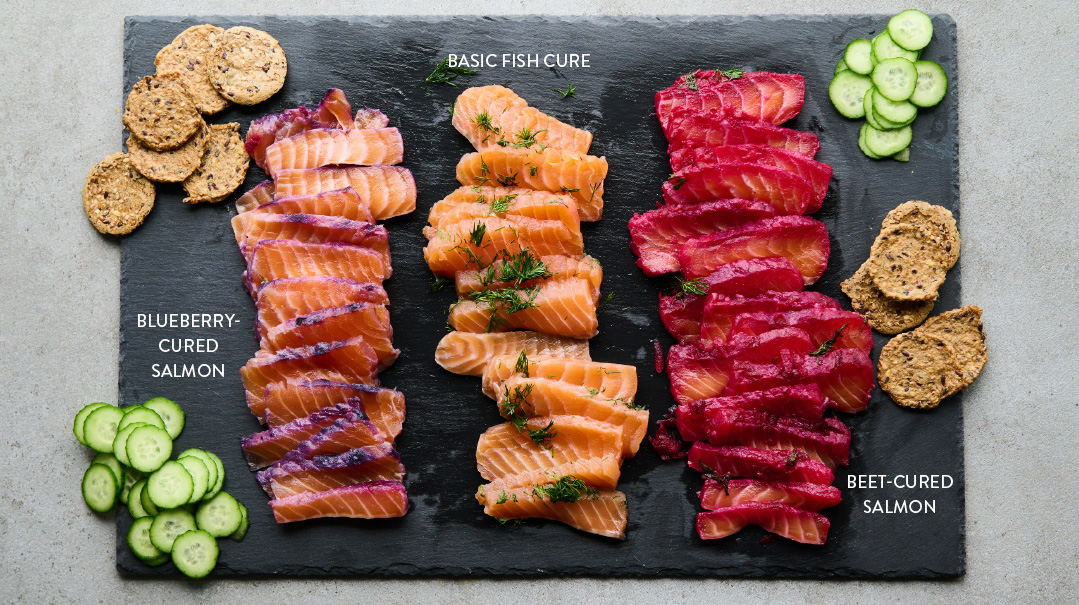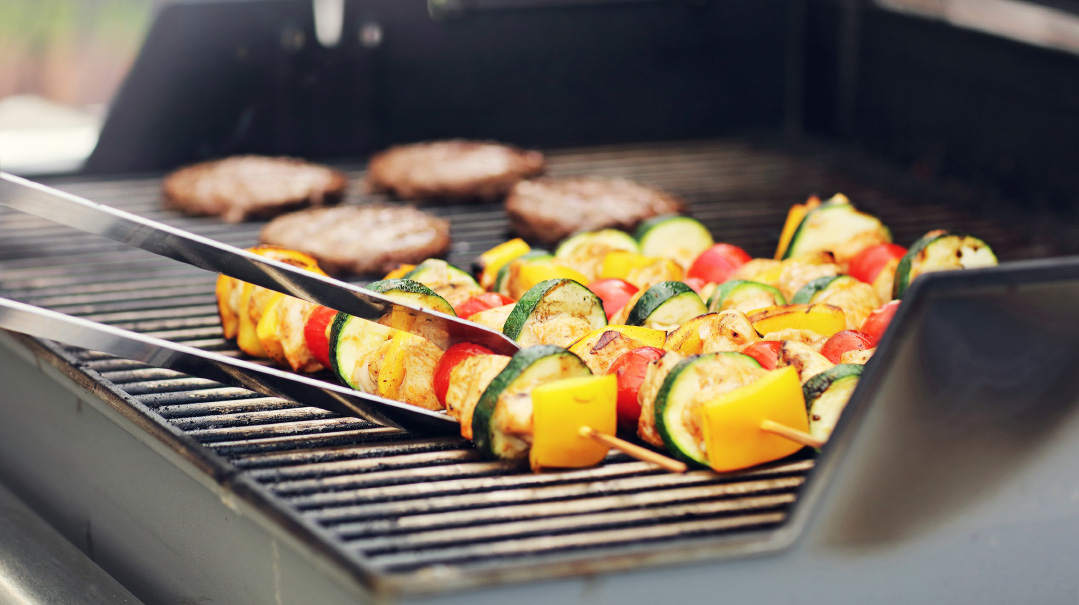Making the Switch

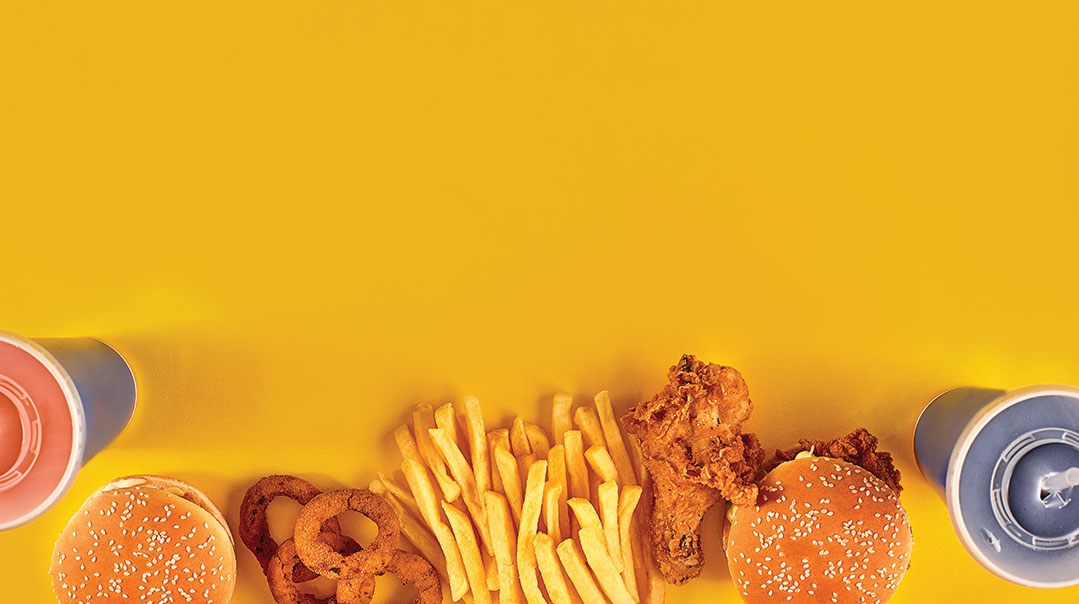
Baalei Teshuvah Remember Going Kosher
For the non-Torah-observant person, the world is his oyster… often quite literally. Be it the fast-food charms of cheeseburgers or the foodie delights of cuisine from Thailand or Tuscany, nonreligious Jews — who nevertheless retain a very Jewish love of good food — have tasted it all. Yet, when many of these freewheeling gourmets opt to start keeping mitzvos, kashrus is one of the most obvious places to start. It’s not that hard to buy some new pots and dishes or call a local rabbi to come blowtorch your oven. But is it hard to part with the once-loved, nonkosher delicacies of the past? How do you tell friends and family that you can no longer eat in their homes or accompany them to favorite old haunts? A few intrepid baalei teshuvah share their experiences.
Learning the Ropes
Bella Wishnevetski’s parents grew up in the Soviet Union and knew next to nothing about keeping kosher. As a result, when Bella began learning about Yiddishkeit while at the University of Michigan, she took baby steps that today strike her as comical. “I started by trying not to mix meat and milk,” she relates. “I knew a cheeseburger was no good, but I thought I could have dairy and meat on the same plate! “I was living in a dorm and eating in the cafeteria, so my next step was to separate the courses. I’d eat the ice cream first, take a sip of water, then eat the treif meatballs!” She laughs. “For a while I thought you had to wait six hours after dairy, just like meat.” Eventually she took on eating only kosher meat, limiting herself to dairy and meat on the same plate!
“I was living in a dorm and eating in the cafeteria, so my next step was to separate the courses. I’d eat the ice cream first, take a sip of water, then eat the treif meatballs!” She laughs. “For a while I thought you had to wait six hours after dairy, just like meat.” Eventually she took on eating only kosher meat, limiting herself to dairy and salads in nonkosher places, and finally went fully kosher. When Chaya S. began keeping kosher, she was a vegetarian, so it wasn’t that complicated. After marrying a non-vegetarian, she started eating meat again, as she’d learned that shechitah is the most humane form of slaughter. Chaya still worries about the effect of too much chicken and meat consumption on the environment, as well as on health, so she mostly limits meat-eating to Shabbos. But she doesn’t let her old concerns dominate her: “I learned that Hashem is in charge, and it’s not all in my hands anyway.” Bringing in meat as well as dairy, though, made running her kitchen more complicated. “I still sometimes trip up on the technicalities,” she says. “I’ll wonder, Am I allowed to cook meat in a pot I used for fish? What about those things like garlic and eggs that you’re not supposed to leave out unpeeled — is it okay if the eggs are mashed with mayonnaise?” Even her frum neighbors aren’t always helpful, as they do what their mothers did but don’t always know why. Some told her they ate strawberries and raspberries as children, but now they don’t, leaving Chaya to wonder if the berries are more infested today or we’re just more aware. Natasha Nanes, who grew up in a mostly kosher home, had nevertheless never heard about pareve. She didn’t understand why rice cooked in a meat pot couldn’t be eaten with cheese. Currently living in a small Manhattan apartment, she finally let go of the idea of keeping pareve pots: there’s simply no room.
What They Gave Up
Bella grew up with no knowledge of kashrus; her family’s idea of fun was to go out together to the Olive Garden, a nonkosher Italian restaurant chain. “There are a few nonkosher dishes I liked, which aren’t reproducible in kosher form,” she admits. She’s also nostalgic for the traditional Russian dishes her mother cooks (which require ingredients that don’t have hechsherim). When Chaya S. was single in Vancouver, multicultural food experiences were a big part of her life. “My friends and I were foodies,” she says. “We’d go to Vietnamese, Indian, and Japanese restaurants.” In a way, since she was a vegetarian, she probably steered clear of really treif food. But she didn’t check for hechsherim, and ate in nonkosher restaurants.
She admits to missing eating out. “I couldn’t find kosher equivalents for the ethnic restaurants I enjoyed before,” she says. “Once, after I got married, my husband told me, ‘We’re going out to eat for your birthday — I found a kosher Indian place!’ But it didn’t match my memories of the Indian places I’d known.”
She notes that kosher restaurants cater to the tastes of the frum public, which tend to be conservative. She once ordered sushi and it came without wasabi. When she asked for it, she was told they’d stopped offering it due to lack of demand. While kosher Mexican restaurants tend to be meat, Chaya wishes she could eat nachos with pareve refried beans, cheddar cheese, and sour cream. But as the kosher food market expands, there are admittedly many more ethnic products around. “I found kosher kimchi recently, and it was actually good!” she says. She misses a good spring roll — it’s too time-consuming to make herself in kosher form — and wishes her local pizza stores would offer some combinations she enjoyed in nonkosher places, like spinach and feta, or pineapple and cheese.
But sometimes the foodie culture she was once part of became tiresome. There was social pressure to experience every new restaurant and trend that popped up — “You have to try the new Slow Food place!” It was also expensive. “It’s not a sustainable lifestyle, and today, with yeshivah tuitions to pay, it really wouldn’t be!” Chaya says. Natasha never ate real treif growing up; she simply took her observance to new levels when she stopped eating fish and salads in nonkosher restaurants. Her husband, however, grew up without kashrus. He still misses his old fave: chicken parmesan. Once a year, on his birthday, she makes him a version with pareve cheese. “But it apparently falls short of the original,” she says.
While Manhattan has lots of kosher restaurants, “they tend to be clustered in certain areas,” Natasha says. “It’s hard to be out with a baby downtown and have nowhere convenient to stop and eat! I miss being able to go into my old vegan restaurants, which were all over. It was also an adjustment to have to worry about kosher food and keilim every time I travel — I can’t pick up and go like I could before.”
Friends and Family Plan
For many baalei teshuvah, the toughest part of the transition is figuring out how to maintain your social ties with your former friends, especially since so much socializing revolves around going out to eat. Parents may be dismayed when their children now refuse to partake of their mother’s efforts. “My mother-in-law gets frustrated that we can’t sit down for a family meal in her house,” Chaya says. Bella’s parents used to keep a few kitchen items just for her — a meat pot, a dairy pot, a couple of plates, stored under the sink. But her brother became frum too. “Now they have three dairy pots, not one,” Bella says. She involves her mother in kosher cooking by learning to make traditional Shabbos recipes with her.
Rivky S. found it was trickier to eat at her parents’ house — where they thought they kept kosher — than her in-laws’ house, where clearly nothing was. “My mother would prepare something, and then we’d realize a spice or sauce wasn’t kosher,” she says. “Once she ordered a whole Shabbos for us — hundreds of dollars’ worth of food — and it turned out to be a hechsher we don’t eat! We called our rav, who told us — since it was just a few hours before Shabbos — that we could eat it that one time, but not all the time.”
The very idea of asking a rav was foreign to her parents, who didn’t understand why she and her husband couldn’t figure things out for themselves. Even she herself initially felt uncomfortable calling a rav for what seemed like trivial questions. “It requires giving over your own judgment to a rav, which entails humility,” she says.
Socializing with friends likewise gets harder. “You don’t want your old friends to think you don’t like them anymore,” says Judith Eisenstein, originally from Mexico and now in Miami. “It’s especially hard at the beginning, because you feel what you’re doing is right, but you don’t know how to explain it yet.”
“Eating together is social bonding!” Rivky S. says. “It’s not easy maintaining friendships without it. I sometimes feel offended when my friends don’t offer to meet in a kosher restaurant, but in their eyes kosher places are more expensive and not as good. When I ask for a kosher place, I’ll often offer to pick up the tab because I feel bad.”
While it is possible to go with clients to nonkosher places and drink a Coke, that’s awkward as well. Bella sometimes does that when her job in marketing consulting requires her to travel. At least when she’s home in New York she has upscale kosher places she can invite clients to. Am Yisrael was meant to be a holy nation that stands apart from the rest. Our dietary restrictions impose some separateness. As Bella and her close friends became more observant, they found their social lives shifting away from college beer parties; instead, they’d head out to frum homes for Shabbos. “We’d tell people we were invited to dinner parties,” she jokes. But although these women had to give up beer parties, the Olive Garden, and exotic ethnic restaurants, not a single one of them has regrets. Those material enjoyments were replaced by a fulfilling life of Torah, one that nourishes the soul as well as the body. And in today’s world, eating kosher doesn’t mean mesirus nefesh. On the contrary, it’s delicious!
Chaya’s Pizza with Pineapple
- 1 pizza, frozen or homemade
- 1 15-oz (425-g) can pineapple tidbits
- pepperoni or sausage-flavored soy crumbles (optional)
Top the pizza with the pineapple and crumbles and heat.
Judith’s Kosher Dairy Enchiladas
- 18 Mexican corn tortillas
- 2 8-oz (225-g) bags shredded mozzarella cheese
- sour cream (optional)
SAUCE
- 2 29-oz (820-g) cans tomato sauce
- 1 15-oz (425-g) can tomato paste
- 1 8-oz (225-g) can chopped tomatoes with green chiles (Walmart brand is kosher) or plain chopped tomatoes
- 1 onion, diced
- 5 Tbsp dry or fresh parsley
- 2 Tbsp pareve chicken soup mix (or sub salt, pepper, and garlic powder)
To make the sauce: Blend the tomato sauce, tomato paste, and chopped tomato (just for a few seconds for the sauce to have some texture). Heat some oil in a frying pan and sauté the onion. Add the tomato sauce mixture along with the chicken soup mix. Preheat oven to 350°F (175°C). In a pan, warm the tortillas for about 3 minutes on each side (this will allow you to fold them without cracking them). Fill the tortillas with cheese and place in a 9x13-inch (20x30-cm) baking pan. Pour the sauce on top and sprinkle with shredded cheese. Place the pan in the oven and heat until cheese is melted. If desired, add cold sour cream on top just before serving.
(Originally featured in FamilyTable, Issue 662)
Oops! We could not locate your form.


